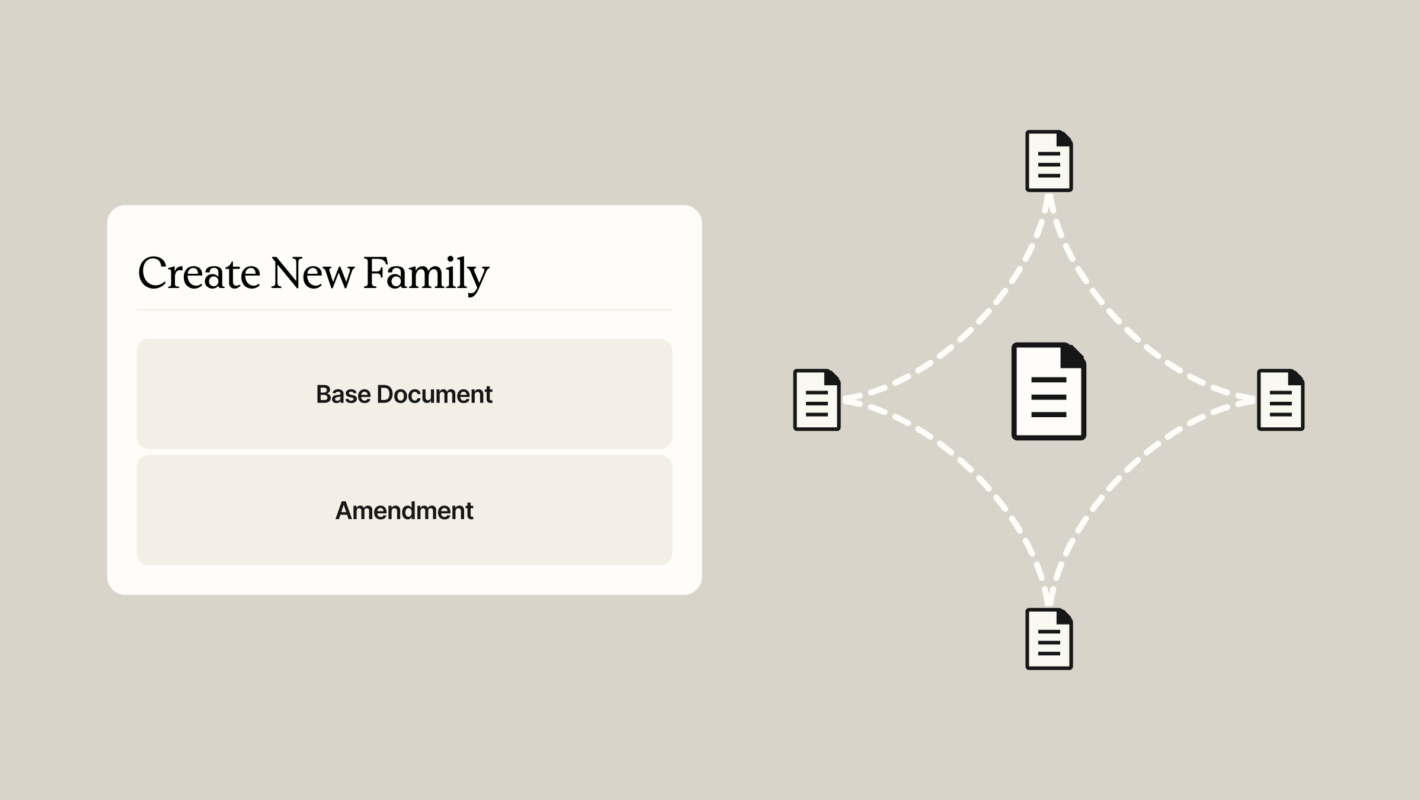Transforming Unstructured Documents to Data Assets
January 16, 2025
The elusive, near impossible task of creating a Data Asset from unstructured data sitting in contracts and legal documents is now achievable through the use of Robin AI Reports.

Context
Contracts are unstructured documents which means it’s very difficult for legal teams to get insights quickly and, until now, there haven’t been tools available that enable the efficient extraction of structured data from these documents. The tools that do exist in the broader legaltech landscape are very limited in their applications and use cases, e.g. there might be tools that extract information like dates from the documents, but they don’t provide flexibility and customisation to enable lawyers to extract any type of information from documents in a structured way, or to create a true legal data asset.
Businesses need structured data to optimize operations, extract insights and remain competitive. Information needs to be in standardized formats in databases in order to integrate effectively with analytics and business intelligence tools.
In short, businesses need reliable, clean data. Lots of business divisions have made big strides on this front, but the legal teams have often been a step behind because of the highly unstructured nature of contracts. It has been a huge manual lift for legal teams to manually structure the data in their contracts by labelling specific provisions — it’s time-consuming, and error-prone work.
Some legal teams have tried to structure this data through the use of legacy CLM systems. CLMs do not in and of themselves structure the data. The implementation of a CLM system involves manually labelling specific provisions in documents and matching those against specific fields (which can’t necessarily be tailored to custom requirements) or relying on outdated techniques that provide very inaccurate approaches to categorising data in contracts. Some legal teams have implemented manual processes that require legal teams to manually input information into systems like CRMs as they go, so when a new contract is signed, specific fields in the CRM are populated to add some structure about the documents as they go.
These ways of working were designed in a world where it wasn’t possible to use AI to achieve the standardization and structuring of data in legal documents. These are time-consuming and lengthy manual processes which are now set to be transformed through the use of Legal AI to bring structure to unstructured legal documents.

Robin AI’s Journey
Robin AI Reports provided the first versatile application for lawyers to extract and synthesise information from across hundreds or even thousands of documents at once. This has enabled businesses to achieve time savings of up to 98% on some tasks and popular use cases include due diligence in M&A, quarterly audits and ensuring regulatory compliance, as well as orchestrating urgent tasks like incident response to cyber attacks.
There is a lot of value in the ability to take the complex language of legal documents and be able to extract and synthesise the information needed to answer critical business questions. Feedback from customers has often focused on the power to Reports to go beyond mere data extraction, and to go a step beyond to actually formulate the answer to the question.
To illustrate this with an example, with legacy tools that required months of set up, you might be able to achieve the extraction of a specific clause type, e.g. a data protection clause from a set of documents. These tools required lots of time to train to complete these tasks. However they didn’t actually provide legal teams with the fast answers to important questions like “do I need to notify the customer about a cyber attack?”.
Getting the direct answers to questions with Robin AI is extremely powerful. Having the complete flexibility to ask any question about your documents is providing new and faster ways for legal teams to operate in the ways that meet their requirements. Building your own Reports means that your teams can get the exact information that they need for different tasks like audits or checking for compliance with a specific piece of regulation.
Robin AI is now taking this powerful, customisable product a step further with the ability to enhance Reports by specifying the answer types that are desired - this could include yes / no answers, currency, dates, quantities, durations, percentages and more.
This represents a really important shift for businesses - they can now create a legal data asset by leveraging Robin AI Reports. This unlocks a host of applications and analysis through the use of this structured data to drive insights, to perform analysis, and to be able to answer business questions quickly.
Impact for Businesses
For decades, businesses have sought a solution to the challenge of being able to structure data across legal documents at scale. And for decades, businesses have bought technology like Contract Lifecycle Management software in an attempt to bring more standardization and structure. As we’ve written about previously, CLMs have not delivered value to organisations as they require a huge lift of manual work and and it is expensive software.
We’re at a juncture now where businesses can build their first legal data asset without the time or cost that was required before - and they can add a level of flexibility and customisation to ensure that the data they need is at their fingertips, rather than being restricted to a list of pre-determined fields.
This juncture means that businesses can either seek to improve the ROI on their CLM investment by utilising Robin AI to build a data asset that can be imported into their CLM system. Or they can choose to go a new, forward-thinking route, leveraging Robin AI to be able to retrieve the structured data that they need to answer business questions quickly, and to be able to perform enhanced analysis through Excel and other business intelligence tools, without the need to invest in a CLM.
Fundamentally, legal departments want to have the information at their fingertips to be able to support business decisions. Whether that’s providing information to finance teams about payment terms and contract renewals, working with the CIO and information security teams during an incident response, or creating better visibility for the board into specific terms with strategic partners that might expose the business to risk, the question always comes back to the accessibility of the data.
We’re entering a new era where legal data assets empower businesses with intelligence to make faster decisions and unlock new growth opportunities. To find out more about Robin AI Reports, speak to our team https://www.robinai.com/book-a-demo.


